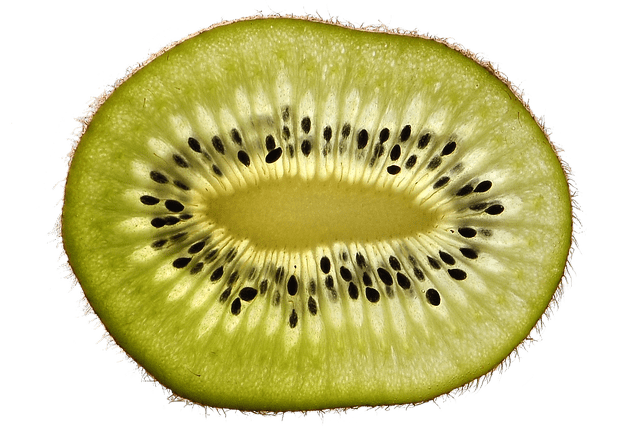How to grow Kiwis
Kiwis are delicious and nutritious fruits native to China

In this article:
- Introduction to Kiwis
- The History of Kiwi Fruit
- Understanding Kiwi Varieties
- Choosing the Right Kiwi Plant
- Planting Kiwis: Soil Requirements
- Sunlight and Watering Needs for Kiwi Plants
- Essential Nutrients for Growing Kiwis
- Pruning Techniques for Kiwi Vines
- Training Kiwi Plants: Trellises and Support Systems
- Common Pests and Diseases of Kiwis
- Harvesting Kiwi Fruit: When and How
- Storing and Preserving Kiwis
- Propagating Kiwis: Growing from Seeds and Cuttings
- Troubleshooting Tips for Kiwi Cultivation
- Interesting Facts about Kiwi Fruit
- Conclusion
Introduction to Kiwis
Kiwis are delicious and nutritious fruits native to China. They are known for their sweet and tangy flavor, as well as their vibrant green flesh speckled with tiny black seeds. Kiwis are packed with antioxidants, vitamins, and minerals, making them a great addition to a healthy diet.
The History of Kiwi Fruit
Kiwis were originally known as Chinese gooseberries, but they were later renamed to kiwi fruit due to their resemblance to New Zealand's national bird, the kiwi. They were first introduced to New Zealand in the early 20th century and eventually gained popularity worldwide.
Understanding Kiwi Varieties
There are several kiwi varieties available, with the most common being the fuzzy kiwi (Actinidia deliciosa) and the smaller, smooth-skinned kiwi (Actinidia arguta). Each variety has its unique characteristics, such as taste, size, and hardiness.
Choosing the Right Kiwi Plant
When selecting a kiwi plant, consider the variety that best suits your climate and intended purpose. Choose disease-resistant plants from reputable nurseries. Look for healthy, well-rooted plants with no signs of pests or diseases.
Planting Kiwis: Soil Requirements
Kiwis thrive in well-draining soil with a slightly acidic pH level between 5.5 and 6.5. Prepare the planting area by loosening the soil and incorporating organic matter, such as compost or well-rotted manure. Avoid planting in heavy clay or waterlogged soil.
Sunlight and Watering Needs for Kiwi Plants
Kiwis require full sun exposure to grow and produce abundant fruits. Ensure they receive at least 6-8 hours of direct sunlight daily. Provide regular watering, especially during dry periods, to keep the soil evenly moist but not waterlogged.
Essential Nutrients for Growing Kiwis
Kiwis have specific nutrient requirements for optimal growth and fruit production. They benefit from regular applications of nitrogen, phosphorus, potassium, and other essential micronutrients. Conduct a soil test to determine the specific nutrient needs of your plants and fertilize accordingly.
Pruning Techniques for Kiwi Vines
Kiwi vines require regular pruning to maintain their shape, promote air circulation, and encourage fruiting. Prune during the dormant season, removing dead or weak branches and thinning out dense growth. Train the plant to a trellis or support system for better management.
Training Kiwi Plants: Trellises and Support Systems
Kiwis are vigorous climbers that benefit from being trained on a trellis or support system. Create a sturdy structure that can support the weight of the vines and the fruits. Proper training helps to improve airflow, sunlight penetration, and facilitates harvesting and maintenance.
Common Pests and Diseases of Kiwis
Kiwis are susceptible to certain pests and diseases, including aphids, mites, scale insects, and various fungal infections. Regular monitoring, proper sanitation, and the use of organic insecticides or fungicides can help control and prevent infestations.
Harvesting Kiwi Fruit: When and How
Kiwi fruits are typically harvested in late autumn when they reach full maturity. They should be slightly soft to the touch and easily detachable from the vine. Gently twist or cut the fruits from the stem with a sharp knife, being careful not to damage the surrounding branches.
Storing and Preserving Kiwis
Kiwis can be stored at room temperature for a few days until they fully ripen. Once ripe, they can be refrigerated for up to two weeks. Kiwis can also be frozen, either whole or sliced, for longer-term storage. They are also commonly used in jams, jellies, and other preserves.
Propagating Kiwis: Growing from Seeds and Cuttings
Kiwis can be propagated from seeds or cuttings. Growing from seeds takes longer and may not produce fruits identical to the parent plant. Cuttings, on the other hand, offer a faster and more reliable method of propagation. Follow proper techniques for successful propagation.
Troubleshooting Tips for Kiwi Cultivation
If you encounter issues with your kiwi plants, such as poor growth, leaf discoloration, or fruit drop, refer to this troubleshooting guide for possible causes and solutions. Promptly address any nutrient deficiencies, pests, diseases, or environmental factors affecting the plant's health.
Interesting Facts about Kiwi Fruit
Discover fascinating facts about kiwi fruit, such as its high vitamin C content, its ability to help with digestion, and its use as a meat tenderizer due to the presence of an enzyme called actinidin.
Conclusion
Growing kiwis can be a rewarding experience for any fruit enthusiast. By understanding the proper techniques for planting, caring, and harvesting, you can enjoy an abundant supply of delicious kiwi fruits. Follow the tips and guidelines provided in this article to ensure success in your kiwi cultivation endeavors.
